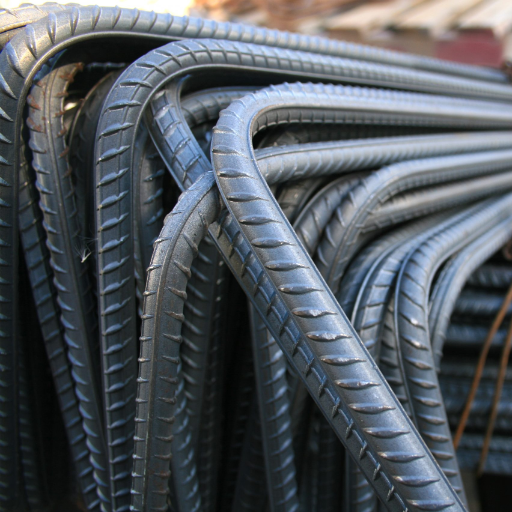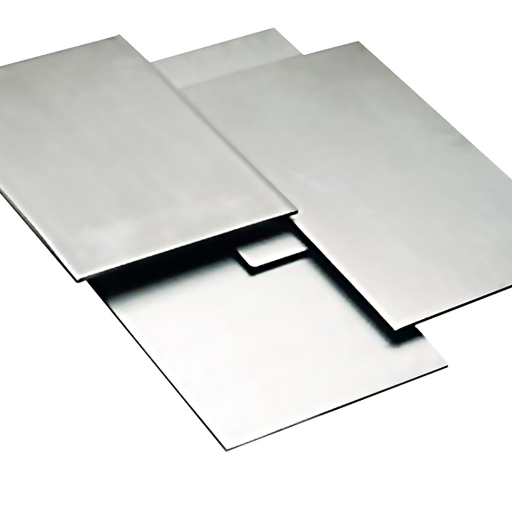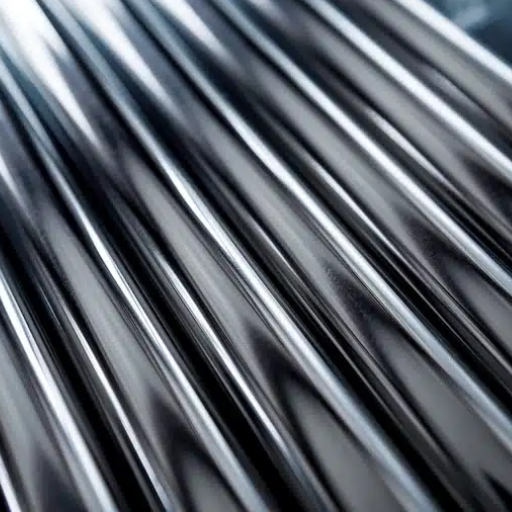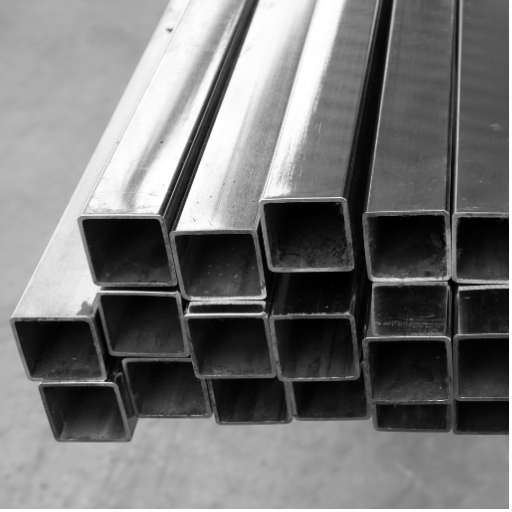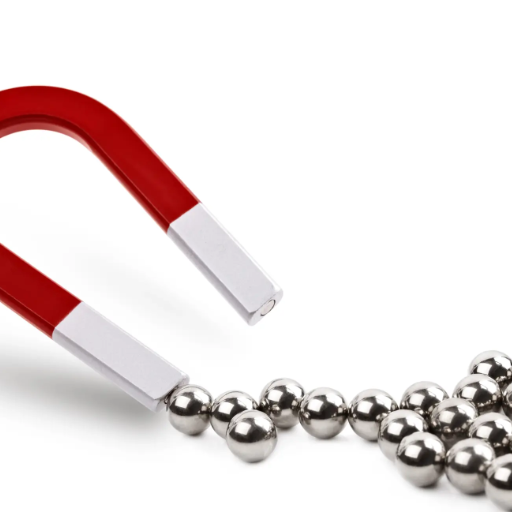Regarding stainless steel, the hypothesis is a common subject among engineers, designers, and manufacturers. The two are used in industries for the uninterrupted reason of owning corrosion resistance, mechanical properties, and lasting durability. Choosing the right grade, though, becomes of utmost importance when attributes of strength, chemical resistance, and suitability to the environment are considered. This article will establish whether 316 stainless steel is really stronger than 304 by analyzing their key differences to assist you in making the appropriate decision for your application. Applying such a question will get answers and practical insight from this guide on stainless steel that is better adapted for demanding conditions or high-stakes projects.
What are the Key Differences Between 304 Stainless Steel and 316 Stainless Steel?

- Corrosion Resistance: When considering tougher environments that include exposure to salts or chemicals, 316 stainless steel definitely will offer better corrosion resistance, unlike 304.
- Applications: 304 is used for mostly indoor and general-purpose applications, but 316 finds room in heavy-duty applications like chemical processing, marine equipment, and medical devices.
- Cost: Due to molybdenum, 316 stainless steel is almost always more expensive than 304.
Installing the correct stainless steel on a job depends on its climatic conditions and usage situation.
Understanding the Composition of 304 and 316 stainless steel
Both 304 and 316 stainless steels are classified as austenitic stainless steels, which are renowned for their versatility, durability, and resistance to corrosion. The primary difference lies in their chemical composition, which affects their performance in various environments.
304 stainless steel is composed of approximately 18-20% chromium and 8-10.5% nickel, with small amounts of manganese, silicon, and carbon. These elements combine to create a material with excellent corrosion resistance under standard conditions, as well as good formability and weldability, making it a popular choice for a wide range of applications.
On the other hand, 316 stainless steel contains 16-18% chromium, 10-14% nickel, and 2-3% molybdenum. The addition of molybdenum enhances its resistance to pitting and crevice corrosion, particularly in chloride-rich or high-salinity environments. This makes 316 stainless steel highly suitable for marine applications, pharmaceutical equipment, and environments where chemicals or high humidity are prevalent.
What is the Mechanical Properties Difference Between 304 and 316?
|
Mechanical Property |
304 Stainless Steel |
316 Stainless Steel |
|---|---|---|
|
Yield Strength |
205 MPa (Min) |
205 MPa (Min) |
|
Tensile Strength |
515 MPa (Min) |
515 MPa (Min) |
|
Elongation at Break |
40% (Typical) |
40% (Typical) |
|
Hardness (Brinell) |
201 HBW (Max) |
217 HBW (Max) |
|
Hardness (Rockwell B) |
92 HRB (Max) |
95 HRB (Max) |
|
Corrosion Resistance |
Good |
Superior, especially in chloride environments |
|
Density |
8.0 g/cm³ |
8.0 g/cm³ |
|
Thermal Conductivity |
16.2 W/m·K at 100°C |
16.3 W/m·K at 100°C |
|
Melting Range |
1400-1450°C |
1375-1400°C |
|
Modulus of Elasticity |
193 GPa |
193 GPa |
What are the Corrosion Resistance Properties of 304 and 316 Stainless Steel?

Both 304 and 316 stainless steels show high if not satisfactory corrosion resistance, but their resistance will differ based on the respective environment.
- 304 Stainless Steel: It has good resistance to corrosion in almost all atmospheres, except that it should not be used in chloride-rich environments, wherein it can be attacked by pitting and crevice corrosion.
- 316 Stainless Steel: By imparting a high anticorrosion character to resisting even aggressive environments containing chlorides, 316 stainless steel is capable of resisting pitting and crevice corrosion far better than any other kind of stainless steel. When it comes to protecting marine facilities, processing chemicals, and salty or acidic circumstances, it places 316 stainless steel on top.
With all of this being said, it is palpable to state that both stainless steel types are suitable for durable applications, with the 316 series winning out with superior corrosion resistance and in even harsher environments, including those characterized by surfeit chloride.
How Does Molybdenum Affect the Corrosion Resistance of 316 Stainless Steel?
Molybdenum plays an important role in increasing the corrosion resistance of 316 stainless steel in chloride-laden and other highly corrosive environments. With the addition of about 2-3% molybdenum, 316 stainless steel has its resistance to pitting and crevice corrosion—the localized forms of attack in almost all chloride-bearing environments-levelled up. Molybdenum strengthens the oxide passive layer of stainless steel on its surface, thus making the layer more resistant when exposed to aggressive substances.
The alloy’s resistance is different depending on whether it is increasing or decreasing in acid medium, such as sulfuric or hydrochloric acids, which degrade other less-resistant grades of stainless steel; such a service in aggressive chemical environments makes 316 stainless steel useful for applications including chemical processing equipment, desalination plants, and marine structures. It is confirmed by studies and the analysis of materials that molybdenum-enriched alloys maintain superior integrity upon longer exposure periods even under dynamic or extreme conditions.
Why is 316 stainless steel preferred in Corrosive Environments?
Opposed to corrosive environments, 316 stainless steel shows strong resistance to pitting and crevice corrosion, especially under chloride-rich environments. From a practical standpoint, the molybdenum content, 2-3% molybdenum, enhances significantly the ability to resist oxidative corrosion and chemical attacks to a degree superior to 304 stainless steel. Its usefulness in both industrial and marine environments is emphasized by yet another resistance: that to sulfuric, hydrochloric, and acetic acids.
Which Applications Favor 316 Stainless Steel Over 304 Stainless Steel?

316 stainless steel is preferred over its counterpart, 304, whenever enhanced corrosion resistance and durability are a focal point of an industrial concern. It is used extensively in marine environments and where chemical plants are present, and coastal constructions are gaining greater exposure to chlorides. 316 stainless steel enjoys widespread acceptance in the pharmaceutical and food industries because of its lower potential for metal ion leaching, thus complying with the strict environmental and safety standards. Its resistance to elevated temperatures gives it a definite advantage for use in heat exchangers and other industrial equipment subjected to varying temperatures.
What are the Uses of 316 stainless steel in Marine Applications?
316 stainless steel is considered to offer goods in a marine setup due to the increased resistance to corrosion caused by chlorides and pitting, where 316 is labeled as excellent among other stainless steel grades under these criteria. This provides the best suitability in numerous applications exposed to saltwater and a severe coastal environment. It is specifically used for fabrication in boat fittings, propeller shafts, and fasteners since these components come into contact with seawater. It also finds applications in engineering marine piping systems, heat exchangers, and storage tanks for saltwater or brine solutions.
316 stainless steel, therefore, finds further use around submarine structures and equipment like risers, anchors, or subsea pipeline components; areas where mechanical strength, durability, and extended corrosion resistance are of utmost importance. The alloy also protects dock hardware with a marine-grade strength and yield—to mooring cleats and systems that call for reliability and lasting resilience in the marine environment when under exposure to harsh and strenuous conditions.
Why is 304 stainless steel Commonly Used in Food Processing?
A material extensively used in food processing, 304 stainless steel provides the perfect counterpoint to an exhaustive hygienic quality, thus offering corrosion resistance and durability. The alloy contains 18% chromium and 8% nickel to create a thin passive oxide layer that prevents rusting and guarantees resistance of the material against either acidic or alkaline substances usually encountered in the food industry. Hardly anything can cause bacterial growth on the nonporous surface; hence, it is easy to clean and maintain in compliance with rigorous food safety regulations. Moreover, the 304 stainless steel is markedly resistant to high temperatures and the stronger chemicals used for cleaning, which tend to maintain its integrity in an environment that requires great hygiene over a very long period. The aforelisted properties make it an ideal stainless steel for the manufacture of food preparation tables, processing tanks, conveyor belts, and utensils.
What are the Mechanical Properties of 304 and 316 Stainless Steel?
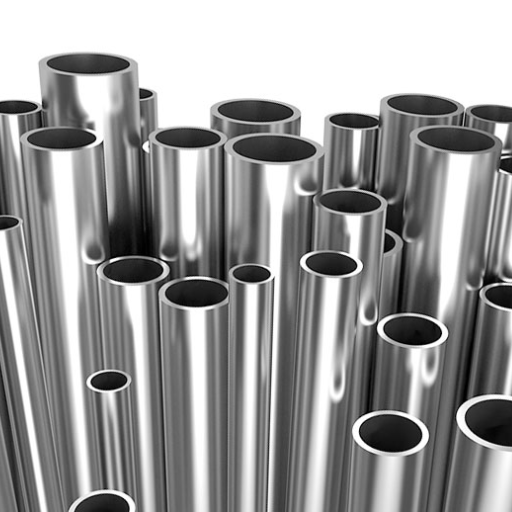
304 and 316 stainless steel possess distinct mechanical properties that make them suitable for various applications:
- 304 Stainless Steel:
- Tensile Strength: Approximately 515 MPa (75 ksi)
- Yield Strength: Around 205 MPa (30 ksi)
- Elongation at Break (in 50 mm): 40%
- Hardness (Brinell): Typically 201 HB
- 316 Stainless Steel:
- Tensile Strength: Approximately 515 MPa (75 ksi)
- Yield Strength: Around 290 MPa (42 ksi)
- Elongation at Break (in 50 mm): 35%
- Hardness (Brinell): Typically 217 HB
Both have excellent strength and ductility. 316 stainless steel can almost match and even exceed its hardness and yield strength, whereas it retains better corrosion resistance in a marine or chemically aggressive environment. This difference is almost always considered when opting between materials on an actual operational basis.
How Do Tensile Strength and Yield Strength Compare?
Tensile strength and yield strength are among the important mechanical features characterizing materials when subjected to an applied load or stress. Tensile strength means the highest amount of tensile (pulling) stress that a material resists before failure or breaking. The tensile strength is considered the overall capacity of the material to bear forces that tend to stretch or pull it. Yield strength, on the other hand, is the stress at which a material begins plastic deformation, and changes the deformation pattern to become permanent and does not “recover” with the release of stress.
What is the Hardness Difference Between 304 and 316 stainless steel?
It is really a distinguishing hardening factor if one compares their Brinell hardness values. The Brinell hardness of type 304 stainless steel is usually stated to be 201 HB, while type 316 stainless steel, with an average of 217 HB, is considered marginally harder than 304 stainless steel. The difference in hardness is mostly attributable to the molybdenum present in 316. Apart from repelling corrosion better, this element strengthens the hardness, a profile characterizing 316 stainless being ideal for more demanding environments where mechanical durability and resistance to chemical or saline exposure are of great concern.
How Do Mechanical Properties Affect the Choice Between 304 and 316?
How to Choose the Right Type of Stainless Steel for Your Needs?
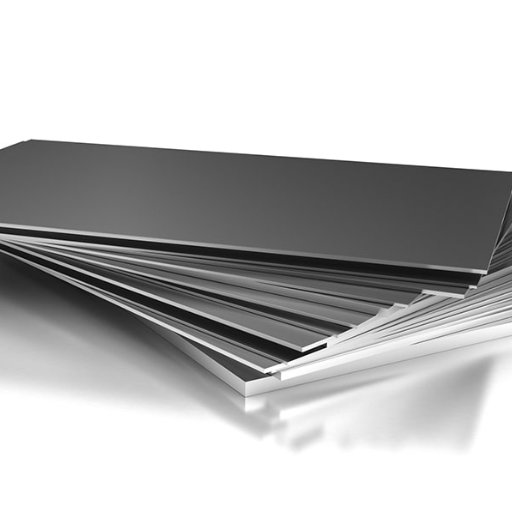
To select the best stainless steel for a particular application, begin with specific environmental considerations that the application will face. In the event that one may have corrosive elements such as saltwater or chemicals, 316 stainless steel is most suitable for corrosion resistance. On the other hand, 304 stainless steel is cost-effective and reliable for general indoor applications or limited exposure to corrosive agents.
What Factors Should You Consider When Comparing 304 vs 316 stainless steel?
- Corrosion Resistance
-
- 304 Stainless Steel: Has good general corrosion resistance in ordinary environments. Suitable for any indoor or dry application with little regard to harsh chemical or salty environment exposure.
- 316 Stainless Steel: Contains 2-3% molybdenum, which significantly enhances its resistance to pitting and crevice corrosion, especially in chloride-rich environments such as marine or industrial applications.
- Chemical Composition
-
- 304 consists of chromium around the elements of 18% and 8% nickel.
- 316 contains 18% chromium, 10% nickel, and 2-3% molybdenum. This added molybdenum makes 316 more resistant to chemical attack and suitable for harsher conditions.
- Environmental Conditions
-
- 304 is enough for a medium environment, i.e., kitchens, home appliances, and general industry.
- 316 surpasses in high salinity environments, acidic compound environments, or exposure to chlorides; thus, it will be perfect for marine constructions, chemical plants, or pharmaceutical settings.
- Temperature Tolerance
-
- In high temperatures, both grades behave equally, yet 316 tends to remain intact structurally at more extreme thermal environments. Hence after high operating temperature requiring sustained performance, it commonly finds extensive use.
A complete evaluation of these factors along with conditions and demands of your application will lead to your selection of the stainless steel that is best in terms of performance-related cost. Always conduct a thorough environmental condition and operational analysis with your specific application in mind to avoid under-specifying or unnecessarily costing your product.
What is the Importance of Nickel Content in Stainless Steel Grades?
Reference Sources
-
Welding and Mechanical Properties: Studies on Activated Tungsten Inert Gas (ATIG) welding of 316L stainless steel showed improved tensile strength and hardness compared to traditional TIG welding. This is attributed to the formation of delta ferrite, which enhances mechanical properties.
-
Comparative Analysis: While 304 stainless steel is widely used for its cost-effectiveness and general-purpose applications, 316 stainless steel is preferred in environments with higher corrosion risks or where enhanced mechanical properties are required.
Frequently Asked Questions (FAQs)
Q: What is the difference between the 304 and 316 grades of stainless steel?
A: The primary difference between 304 and 316 grades of stainless steel lies in their chemical composition. While both are austenitic stainless steel alloys, 316 contains molybdenum, which enhances its resistance to corrosion, especially in chloride environments. This makes 316 grade more suitable for marine applications compared to 304 stainless steel.
Q: Is 316 stainless steel stronger than 304 stainless steel?
A: 316 stainless steel has a slightly higher strength than 304 stainless steel, especially when exposed to high temperatures. However, the real advantage of 316 lies in its superior resistance to corrosion, making it ideal for use in harsh environments, such as food processing equipment and marine applications.
Q: What are the environmental conditions where 316 stainless steel outperforms 304?
A: 316 stainless steel is particularly effective in environments with high chloride levels, such as seawater and chemical processing. Its additional molybdenum content enhances its resistance to pitting and oxidation, making it a preferred choice in challenging environmental conditions.
Q: Can 304 stainless steel be welded, and how does it compare to 316?
A: Yes, 304 stainless steel can be welded, and it offers ease of fabrication. However, 316 stainless steel is also weldable, and its welding process may require additional considerations due to its higher nickel content, which can affect the properties of stainless steel in welded areas.
Q: What are the properties of stainless steel that make the 316 grade suitable for medical applications?
A: The properties of stainless steel, particularly 316 grade, include high strength, resistance to corrosion, and the ability to withstand sterilization processes. These characteristics make it ideal for medical applications, such as surgical instruments and implants, where hygiene and durability are critical.
Q: How does the carbon content affect the strength of 316 stainless steel?
A: The carbon content in 316 stainless steel is relatively low, which contributes to its ductility and toughness. This low carbon content helps maintain the strength of 316 stainless steel while also enhancing its resistance to corrosion, especially in harsh environments.
Q: What makes 316 stainless steel a marine grade compared to 304?
A: 316 stainless steel is classified as marine grade due to its molybdenum content, which provides enhanced resistance to corrosion from saltwater and harsh marine environments. In contrast, 304 stainless steel, while still resistant to rust, is more prone to corrosion when exposed to chloride ions found in seawater.
Q: What considerations should be taken when choosing between 304 and 316 stainless steel for construction projects?
A: When choosing between 304 and 316 stainless steel for construction projects, consider the environmental conditions the material will face. For projects exposed to corrosive elements, such as coastal areas or chemical processing, 316 stainless steel is the better option due to its superior corrosion resistance. For less demanding environments, 304 stainless steel is often sufficient and more cost-effective.
Q: What are the common applications for 304 and 316 stainless steels?
A: 304 stainless steel is commonly used in kitchen equipment, storage tanks, and food processing equipment due to its good corrosion resistance and ease of fabrication. 316 stainless steel, on the other hand, is frequently used in marine applications, chemical processing, and any application where higher corrosion resistance is essential.

